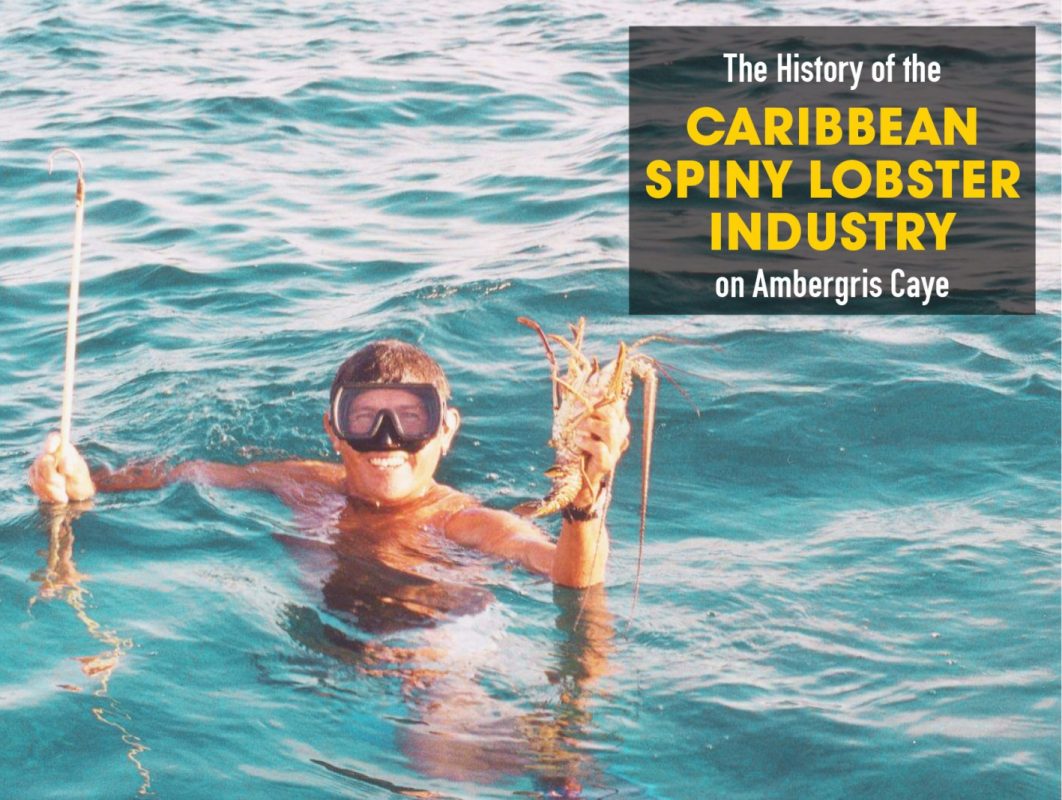The Lobster Industry
The first few decades of the twentieth century brought the beginning of Belize’s spiny lobster industry. Belizeans had traditionally rejected lobsters as “trash fish” and made no effort to exploit them. In the early 1920s as the North American lobster industry was declining, an American and a Canadian founded cannery to process lobster tails for export to the US market. The fishermen who sold their lobster tails to them received only 1₵ per pound.
From these tentative beginnings grew a successful lobster industry that produced the country’s most valuable marine export from roughly World War II to the present day. With the lobster fishery came the first freezer boat to purchase lobster tails directly from fishermen and transport them to the USA. After World War II, buyers sent more vessels with freezers and established processing and cold storage facilities in Belize City, thus permitting full-time, year-round lobster production.
The lobster industry had developed sufficiently by the late 1940s and 1950s to attract more full-time fishermen. The lobster was sold to the freezer vessel Betty Jean and the Catalina seaplane, or “flying boat” for 5₵ whole and 7₵ for the tail, per pound. The lobster buyers bought on credit, paying the fishermen only when the lobster was sold in the USA. The last time the flying boat was seen in Belize, it was departing with 4000 pounds of lobster caught by the fishermen of Ambergris Caye, for which they have yet to receive payment.
Lobster was easy to catch in the early days of the industry. A skillful fisherman could catch 300 to 400 lobsters in one day within a mile (1.6 kilometers) of San Pedro. A catch of 1,000 to 2,000 lobsters a week was common.
In the early 1950s, buyers started to increase payment for lobster; eventually coming to Ambergris Caye to buy directly from the fishermen, paying them from $1.25 to $1.50 per pound.
By the late 1950’s it was becoming evident to Belizean lobster fishermen that the buyers were getting rich off the trade but that the fishermen were not. In 1960, the fishermen of Caye Caulker established the first fishermen’s cooperative in British Honduras (Northern Fishermen’s Cooperative Society). This first cooperative was quickly imitated and in 1963, the second cooperative to become operational was the Caribeña Producers Cooperative Society Limited of Ambergris Caye. Lobsters caught by coop members were delivered to the then beachfront home of Seferino Paz (in front of the site of today’s Fido’s Bar). Prisiliano “Nanito” Gomez and Seferino Paz would receive the lobsters, remove the heads, weigh the lobsters and then place them in coolers. Each fisherman delivering lobster was given a receipt redeemable at the Caribeña office, then located under the raised house of founding coop member Felipe Paz (where Cholo’s Bar is today). General Manager Octavio Alamilla and office assistant Elia Aguilar ran the office, made payments and maintained the books. Each Saturday, Seferino Paz transported lobsters to Belize City on his sailboat La Helen and returned with ice. The Caribbean Queen Company processed the lobsters at its plant in Belize City and exported them.
By Mito Paz, Coordinator (NICH), May 6th, 2016
A big thank you goes out to Mr. Mito Paz, NICH and the San Pedro House of Culture! Join us in Belize this summer to enjoy all things Lobster. Contact us today to find great deals on a summer vacation with Sandy Point Resorts!



